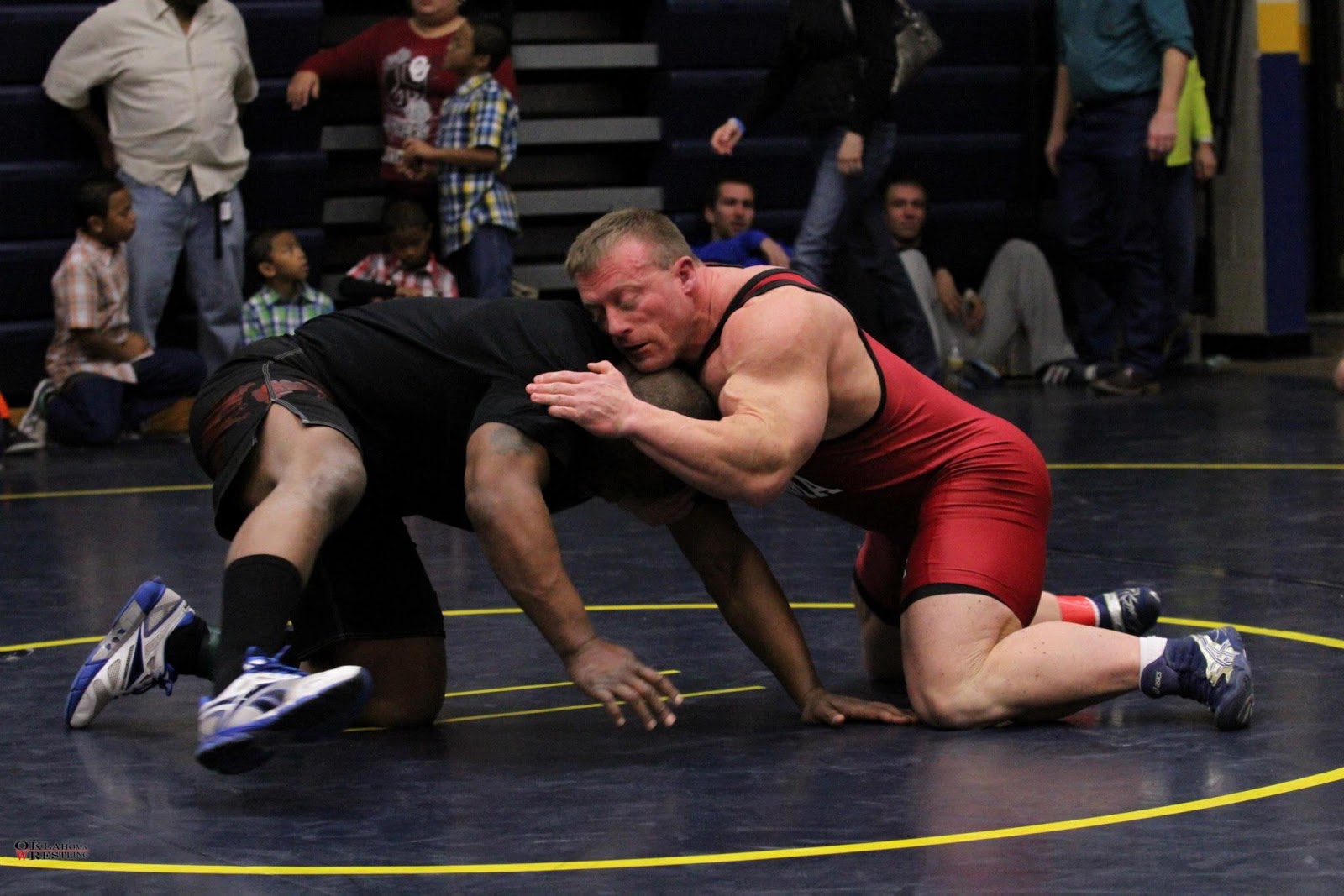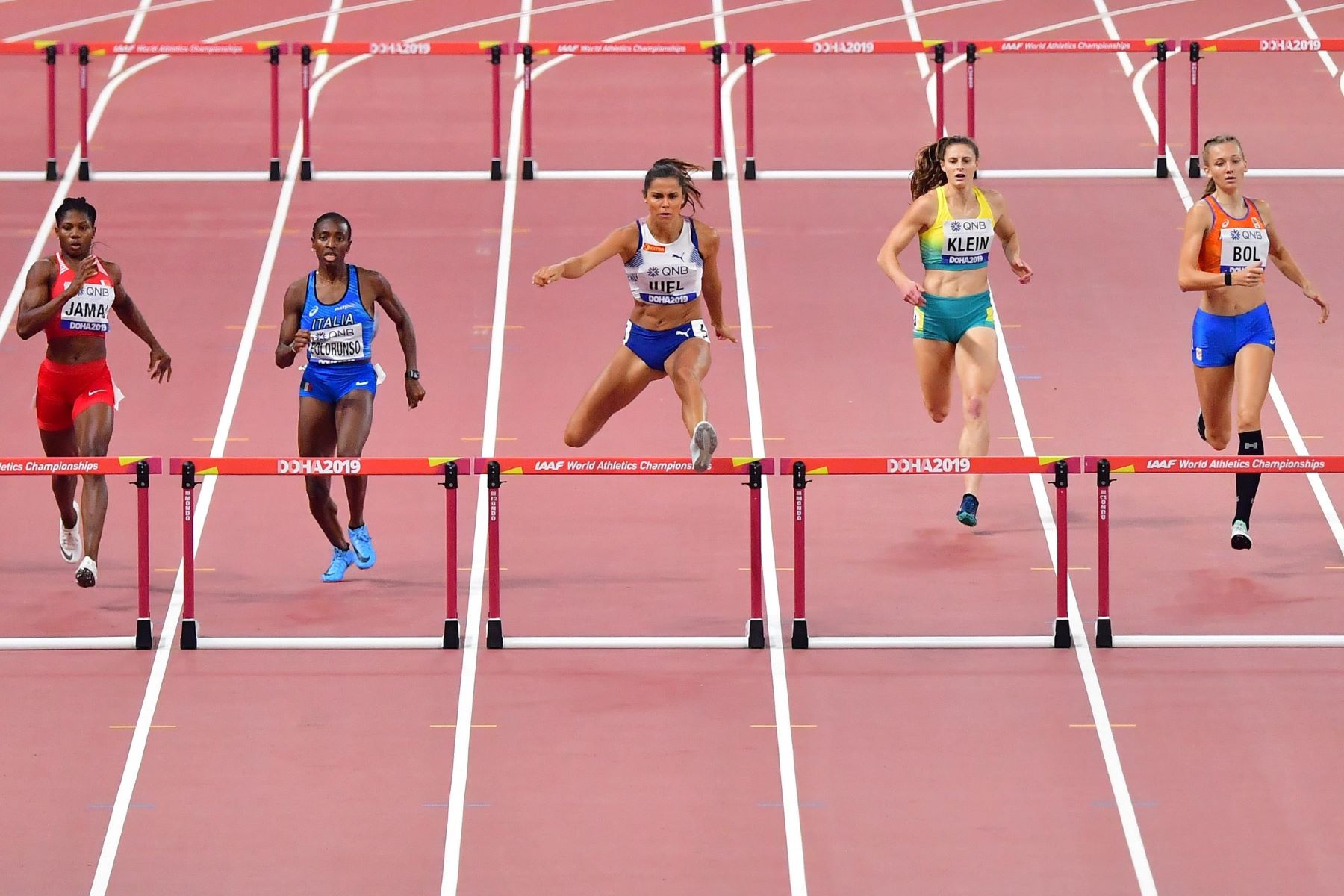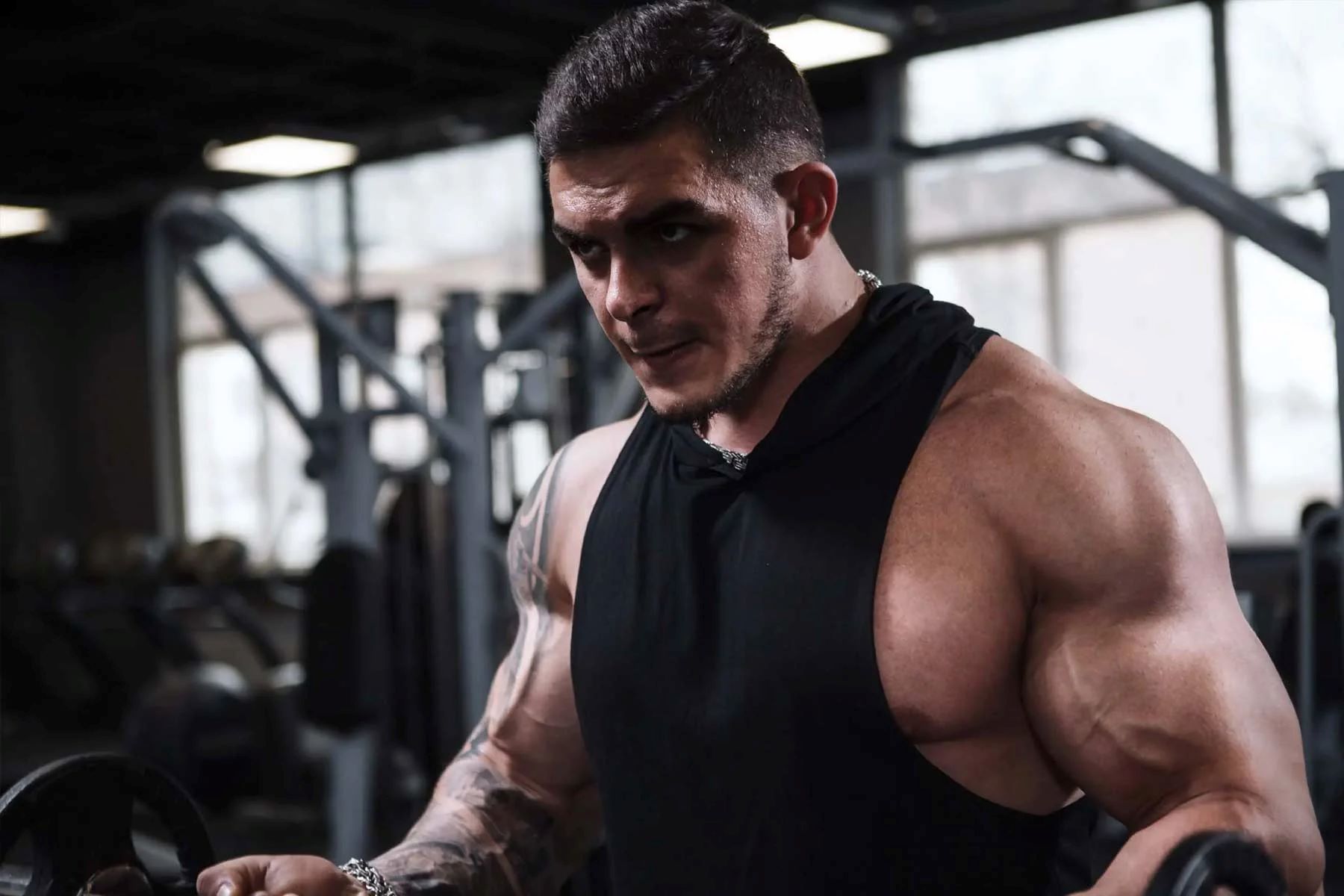

Featured
How To Increase Stamina For Wrestling
Modified: January 22, 2024
Learn top tips and exercises to boost your stamina for wrestling with this featured guide. Take your athletic performance to the next level and dominate the mat!
Introduction
Wrestling is a physically demanding sport that requires a combination of strength, agility, and skill. But one aspect that often gets overlooked is stamina. Stamina is the ability to sustain physical exertion over an extended period of time, and it plays a crucial role in a wrestler’s performance. Having high levels of stamina not only allows wrestlers to maintain a high intensity throughout a match, but it also gives them the endurance to withstand the grueling training sessions that are required to excel in this sport.
Stamina is not just about running long distances or enduring hours of cardio. It involves a combination of different factors, including proper nutrition, hydration, conditioning exercises, and mental strategies. In this article, we will delve into the various aspects of increasing stamina for wrestling and provide practical tips and techniques to help wrestlers enhance their endurance levels.
Whether you’re a competitive wrestler or someone looking to improve your overall fitness, this article will provide you with valuable insights on how to boost your stamina and perform at your best on the wrestling mat. So, let’s jump right in and explore the importance of stamina in wrestling, understand the different energy systems involved, and learn how to optimize nutrition and hydration for optimal performance.
Importance of Stamina in Wrestling
Stamina is a critical factor in wrestling, as it directly impacts an athlete’s ability to maintain a high level of performance throughout a match. In a sport where matches can last anywhere from a few minutes to several hours, having sufficient stamina can make all the difference between victory and defeat.
One of the key reasons stamina is crucial in wrestling is because it allows athletes to maintain their strength and technique even when fatigued. As a match progresses, fatigue sets in, leading to a decrease in speed, accuracy, and mental focus. However, wrestlers with high stamina can withstand the physical and mental challenges that come with exhaustion, enabling them to execute moves with precision and capitalize on their opponent’s weaknesses.
Another important aspect of stamina in wrestling is the ability to recover quickly between intense bursts of activity. Wrestling matches often involve explosive movements, repeated takedowns, and constant grappling, which can quickly deplete an athlete’s energy reserves. Wrestlers with good stamina can bounce back faster between these bursts of activity, enabling them to maintain a relentless pace and potentially overwhelm their opponents.
Furthermore, stamina plays a crucial role in endurance-based wrestling techniques, such as riding and controlling an opponent on the mat. In these situations, wrestlers need to exert continuous effort over an extended period, and high stamina levels are essential to prevent fatigue from compromising their ability to maintain control and execute techniques effectively.
Moreover, stamina is not only vital during matches but also during training sessions and conditioning drills. Wrestling training often involves high-intensity exercises, circuit training, and long hours of practice. Wrestlers with good stamina can push through these demanding sessions without experiencing early fatigue or a drop in performance, allowing them to make the most of their training and improve their skills.
Overall, stamina is crucial in wrestling for several reasons. It helps wrestlers maintain their strength and technique even when fatigued, recover quickly between intense bursts of activity, excel in endurance-based techniques, and endure the demanding training sessions. By focusing on stamina enhancement, wrestlers can significantly improve their performance and increase their chances of success on the mat.
Understanding the Energy Systems
In order to effectively train and improve stamina for wrestling, it is important to have a basic understanding of the energy systems utilized during physical activity. The human body relies on three primary energy systems: the phosphagen system, the glycolytic system, and the aerobic system.
The phosphagen system, also known as the ATP-PC system, provides immediate energy for short bursts of intense activity, such as explosive wrestling moves or quick sprints. This system relies on stored adenosine triphosphate (ATP) and creatine phosphate (PC) to generate energy. While the phosphagen system provides quick bursts of energy, it can only sustain activity for a very short period, typically around 10 seconds.
The glycolytic system, also known as the anaerobic system, becomes the primary energy source once the ATP-PC system is depleted. This system utilizes stored glycogen in the muscles and liver to produce energy in the absence of oxygen. The glycolytic system is responsible for providing energy during high-intensity activities, such as prolonged wrestling moves and intense drills. It can sustain activity for a longer duration, typically up to 2 minutes, but it produces lactic acid as a byproduct, leading to muscle fatigue and a decrease in performance.
The aerobic system is the long-lasting energy system that utilizes oxygen to produce energy. This system relies on the breakdown of carbohydrates, fats, and, to a lesser extent, proteins to generate energy. It is the primary energy system used during endurance activities, such as prolonged matches or long-distance running. The aerobic system is more efficient and can sustain activity for extended periods, but it takes longer to generate energy compared to the phosphagen and glycolytic systems.
To improve stamina for wrestling, it is essential to train all three energy systems. Incorporating a combination of high-intensity interval training (HIIT) exercises, resistance training, and aerobic conditioning into a training program can effectively target these energy systems and enhance overall stamina.
HIIT exercises involve alternating between short bursts of intense activity and periods of rest or low-intensity activity. This type of training simulates the demands of wrestling matches, where explosive movements are followed by brief recovery periods. HIIT workouts can improve both the phosphagen and glycolytic system, allowing wrestlers to perform at a high intensity and recover quickly between bursts of activity.
Resistance training, such as circuit training or weightlifting, helps to improve muscular strength and endurance. By targeting the muscles used in wrestling movements, wrestlers can enhance their ability to maintain technique and power throughout a match.
Incorporating aerobic conditioning exercises, such as long-distance running or biking, can improve the efficiency of the aerobic system and increase the body’s capacity to utilize oxygen. This can help wrestlers maintain a high level of endurance throughout a match and reduce fatigue.
By understanding and targeting the different energy systems, wrestlers can develop a comprehensive training regimen that optimizes their stamina and prepares them for the physical demands of wrestling matches.
Proper Nutrition for Increased Stamina
Nutrition plays a vital role in increasing stamina for wrestling. Fueling your body with the right nutrients not only provides the energy necessary for intense training sessions and matches but also supports optimal performance and recovery. Here are some key nutritional considerations to enhance your stamina:
1. Adequate Caloric Intake: Wrestlers need to consume enough calories to meet the energy demands of their training and competition. Caloric intake should be tailored to individual needs, considering factors such as body weight, training intensity, and goals. Aim for a balanced diet that includes a mix of carbohydrates, proteins, and healthy fats to sustain energy levels.
2. Carbohydrates: Carbohydrates are the primary fuel source for high-intensity physical activity. Include complex carbohydrates such as whole grains, fruits, and vegetables in your diet to provide a steady release of energy throughout the day. Prioritize consuming carbohydrates before, during, and after workouts to replenish glycogen stores and support optimal performance.
3. Protein: Protein is essential for muscle repair and recovery. Include lean sources of protein such as chicken, fish, eggs, tofu, or legumes in your meals to support muscle growth and repair. Aim for a protein-rich snack after workouts to aid in recovery and promote muscle protein synthesis.
4. Hydration: Proper hydration is crucial for maintaining stamina and preventing dehydration, which can negatively impact performance. Drink water consistently throughout the day and ensure adequate fluid intake before, during, and after training sessions and matches. Sports drinks can also be beneficial during intense workouts to replenish electrolytes lost through sweat.
5. Nutrient Timing: When it comes to increasing stamina, fueling your body at the right times is essential. Consume a balanced meal or snack containing carbohydrates and protein 2-3 hours before training or competition to provide sustained energy. For longer training sessions or matches, consider consuming small, easily digestible snacks like energy bars or fruit during breaks to maintain energy levels.
6. Micronutrients: Adequate intake of vitamins and minerals is essential for proper energy metabolism and overall health. Include a variety of fruits, vegetables, whole grains, and nuts to ensure you are obtaining a wide range of essential micronutrients that support stamina and endurance.
7. Avoid Excessive Fat and Sugar: While healthy fats and natural sugars have their place in a balanced diet, it’s important to avoid excessive consumption of these types of foods. They can lead to weight gain, sluggishness, and decreased energy levels. Focus on choosing nutrient-dense foods that provide sustained energy and support overall health.
Remember, every wrestler’s nutritional needs may vary, so working with a registered dietitian who specializes in sports nutrition can help you develop a personalized nutrition plan to optimize your stamina and performance on the wrestling mat.
Hydration for Optimal Performance
Proper hydration is essential for wrestlers to achieve optimal performance and maintain stamina. Dehydration can lead to decreased energy levels, diminished cognitive function, increased fatigue, and impaired physical performance. Here are some key points to consider regarding hydration to enhance your stamina:
1. Drink Plenty of Water: Water is the best choice for hydrating your body. Aim to drink water consistently throughout the day, even when you’re not training or competing. Keeping your body well-hydrated supports overall health and helps maintain optimal performance.
2. Hydrate Before Training or Competition: Start hydrating well before your training or competition begins. Drink at least 16-20 ounces (500-600 ml) of water 2-3 hours before your activity to ensure adequate hydration. This gives your body time to absorb and distribute the fluids, helping to prevent dehydration.
3. Hydrate During Training or Competition: During intense wrestling sessions or matches, it’s important to drink fluids to replenish what you are losing through sweat. Aim to consume 8-10 ounces (240-300 ml) of water every 15-20 minutes. If your activity lasts longer than 60 minutes or you are sweating profusely, consider hydrating with a sports drink that contains electrolytes to help replace minerals lost through sweat.
4. Monitor Your Urine Color: One of the simplest ways to assess your hydration status is to check the color of your urine. Ideally, your urine should be light yellow or clear. Dark yellow urine is a sign of dehydration, and you should increase your fluid intake. Paying attention to your urine color can help you maintain proper hydration levels.
5. Rehydrate After Training or Competition: Once you’ve finished training or competing, it’s important to replenish fluids lost during the activity. Drink water or a sports drink within 30 minutes of completing your session to aid in the recovery process and support your body’s hydration needs.
6. Consider Electrolyte Balance: Along with water, electrolytes such as sodium, potassium, and magnesium play a crucial role in maintaining proper hydration and supporting optimal performance. While water alone can help hydrate your body, when engaging in intense physical activity for an extended period, electrolytes are lost through sweat and should be replenished. Sports drinks and electrolyte-enhanced water can be beneficial in replacing these vital nutrients.
7. Listen to Your Body: Everyone’s hydration needs can vary, so it’s important to pay attention to your body’s signals. If you are feeling thirsty, start hydrating immediately. Signs of dehydration include headache, dizziness, dry mouth, fatigue, and decreased urine output. If you experience any of these symptoms, take a break, drink fluids, and rehydrate before continuing your activity.
Proper hydration should be a priority for wrestlers to optimize their performance and maintain stamina. By staying well-hydrated, wrestlers can improve their endurance, concentration, and overall physical capabilities on the mat.
Effective Conditioning Exercises for Wrestling
Conditioning plays a crucial role in increasing stamina for wrestling. It involves specific exercises and drills designed to improve cardiovascular fitness, muscular strength, and endurance. By incorporating effective conditioning exercises into your training routine, you can enhance your stamina and perform at your best during matches. Here are some key exercises to consider:
1. Running: Running is a fundamental conditioning exercise that improves cardiovascular endurance. Incorporate both steady-state runs and interval training to simulate the dynamic demands of wrestling matches. Long-distance runs build endurance, while interval training, such as sprints or fartlek runs, helps in developing explosiveness and quick recovery.
2. Burpees: Burpees are a full-body exercise that combines cardiovascular conditioning with muscular endurance. Start in a standing position, drop down to the push-up position, perform a push-up, jump back up to a squat position, and finish with a jump. This exercise targets multiple muscle groups and increases cardiovascular fitness.
3. Circuit Training: Circuit training involves performing a series of exercises in a sequence with minimal rest between each exercise. Include a combination of bodyweight exercises, such as push-ups, squats, lunges, mountain climbers, and planks, to improve overall strength and endurance.
4. Battle Ropes: Battle ropes provide an intense cardiovascular workout while engaging the upper body muscles. Perform various exercises, such as waves, slams, and alternating waves, for time or repetitions to build stamina, endurance, and grip strength.
5. Jumping Rope: Jumping rope is a simple yet effective conditioning exercise that improves footwork, cardiovascular fitness, and agility. Incorporate different jumping variations, such as single-leg jumps, double unders, or alternating foot jumps, to challenge your coordination and endurance.
6. Hill Sprints: Hill sprints are an effective way to build power, strength, and endurance. Find a steep hill and sprint uphill with maximum effort, and then walk or jog downhill to recover. Repeat this pattern for several repetitions, gradually increasing the number of sprints over time.
7. Shuttle Runs: Shuttle runs help simulate the quick movements and changes in direction needed in wrestling. Set up two cones or markers, and sprint back and forth between them, touching the ground at each end. Vary the distances and intensities to challenge your stamina and agility.
8. Medicine Ball Exercises: Incorporate medicine ball exercises into your training regimen to improve core strength, power, and stamina. Exercises such as overhead slams, rotational throws, and Russian twists engage multiple muscle groups and enhance muscular endurance.
9. Wrestling-Specific Drills: Finally, include wrestling-specific drills in your conditioning routine. Integrate takedowns, sprawls, pummeling, and clinch work to mimic the physical demands of a wrestling match. These drills will help improve your stamina while focusing on the specific movements and techniques required in wrestling.
Remember to start with proper warm-up exercises and progress gradually as your fitness level improves. Consistency is key when it comes to conditioning exercises for wrestling. Incorporating these exercises into your training routine will help you build stamina, endurance, and overall physical fitness to elevate your performance on the mat.
Interval Training for Stamina Enhancement
Interval training is a highly effective method for enhancing stamina and endurance in wrestling. This training technique involves alternating between high-intensity exercise bouts and periods of rest or low-intensity activity. By incorporating interval training into your workout routine, you can improve your cardiovascular fitness, boost your anaerobic capacity, and increase your overall stamina. Here’s how to effectively utilize interval training for stamina enhancement:
1. High-Intensity Intervals: Choose exercises that mimic the intensity and movements of wrestling. This can include sprints, burpees, jumping rope, or wrestling-specific drills. Perform the exercise at maximum effort for a specific time interval, typically between 20 to 60 seconds. The goal is to push your body to its limits during these high-intensity intervals.
2. Active Recovery: During the rest periods, engage in low-intensity movement or light activity to facilitate active recovery. This helps to maintain blood flow, prevent stiffness, and prepare your body for the next high-intensity interval. Examples of active recovery can be walking, slow jogging, or performing lighter versions of the conditioning exercise.
3. Work-to-Rest Ratio: The work-to-rest ratio plays a crucial role in interval training. To enhance stamina, it is recommended to begin with a 1:1 or 1:2 work-to-rest ratio. For example, if you perform a 30-second high-intensity interval, follow it with a 30-second or 60-second rest period. As your stamina improves, gradually decrease the rest period or increase the work interval to further challenge your cardiovascular system.
4. Progression: As your fitness level improves, it’s important to progressively increase the intensity or duration of the intervals. This can be done by increasing the speed, effort, or number of repetitions in each interval. Gradually challenging your body with progressive overload helps to continually improve stamina and endurance over time.
5. Variety and Adaptation: Incorporating a variety of exercises and interval formats helps prevent boredom and stimulates further physiological adaptations. Include a mix of cardio exercises, bodyweight exercises, and wrestling-specific drills in your interval training routine. This will challenge different muscle groups and energy systems, leading to overall stamina improvement.
6. Warm-up and Cool-down: Always begin your interval training sessions with a proper warm-up to prepare your body for the demanding exercise. This can include dynamic stretches, light cardiovascular exercise, and mobility drills. Similarly, finish the session with a cool-down period that involves stretching and slower-paced movements to aid in recovery and reduce muscle soreness.
7. Listen to Your Body: Pay attention to your body’s signals during interval training. While it’s important to push yourself, it’s equally important to avoid overexertion and potential injury. If you feel excessive fatigue or pain, take a break or modify the exercise intensity. Remember, consistent and gradual progress is key.
Interval training is a valuable tool for wrestlers seeking to enhance their stamina and endurance on the mat. By incorporating high-intensity intervals and active recovery periods, progressively challenging yourself, and maintaining a well-rounded approach, you can effectively improve your cardiovascular fitness and overall stamina for wrestling.
Weight Training to Build Endurance
While many people associate weight training with building strength and muscle mass, it can also be an effective method for building endurance in wrestling. By incorporating specific weightlifting techniques and training protocols into your workout routine, you can enhance muscular endurance, improve stamina, and perform at your best on the wrestling mat. Here’s how to utilize weight training to build endurance:
1. High-Volume Training: High-volume weight training involves performing a higher number of repetitions per exercise with lighter weights. This approach helps to improve muscular endurance by increasing the number of muscular contractions and training your muscles to withstand fatigue over extended periods. Aim for 12-15 repetitions per set and complete 3-4 sets per exercise.
2. Circuit Training: Circuit training combines weightlifting exercises with cardiovascular exercises, creating a challenging full-body workout. Perform a set of a weightlifting exercise, such as squats or lunges, followed by a brief period of cardiovascular exercise, such as jumping jacks or mountain climbers. Repeat this circuit for multiple rounds to target muscular endurance and cardiovascular fitness simultaneously.
3. Compound Exercises: Compound exercises involve multiple joint movements and engage multiple muscle groups at once. Examples of compound exercises include squats, deadlifts, bench presses, and rows. These exercises require more energy and endurance compared to isolated movements, making them effective for building endurance and overall strength.
4. Supersets and Drop Sets: Supersets involve performing two different exercises back-to-back without rest. This method helps to increase the intensity and challenge your muscular endurance. Drop sets involve performing an exercise with a heavy weight until failure, then immediately reducing the weight and continuing the set. Both techniques promote muscle fatigue and enhance endurance.
5. Tempo Training: Tempo training involves controlling the speed of your repetitions during weightlifting exercises. Incorporating slower eccentric (lowering) and concentric (lifting) phases can increase time under tension, leading to improved muscular endurance. Focus on a controlled and deliberate movement during each repetition.
6. Variation and Progression: To continue challenging your muscles and building endurance, it’s important to incorporate variation and progression into your weight training program. This can include increasing the resistance, adding more sets or repetitions, modifying the exercises, or introducing new training techniques. Gradual progression ensures ongoing adaptation and improvement.
7. Proper Rest and Recovery: Building endurance through weight training requires proper rest and recovery. Allow at least 48 hours of rest between weightlifting sessions that target the same muscle groups. During rest days, focus on active recovery, stretching, and proper nutrition to support muscle repair and growth.
8. Seek Professional Guidance: If you’re new to weight training or unsure about proper techniques, consider seeking guidance from a certified strength and conditioning coach or personal trainer. They can help design a weight training program tailored to your specific needs and ensure that you are using correct form and techniques.
Incorporating weight training into your overall training plan can significantly improve endurance and stamina for wrestling. By focusing on higher repetitions, compound exercises, varied techniques, and progressive overload, you’ll build the muscular endurance necessary to withstand the physical demands of wrestling matches.
Plyometric Exercises for Explosive Stamina
Plyometric exercises are a type of training that focuses on explosive, rapid movements to enhance power, agility, and stamina. These exercises involve rapid stretching and contracting of muscles, which helps to improve the neuromuscular response and enhance overall athletic performance. Incorporating plyometric exercises into your training regimen can specifically target explosive stamina, allowing you to generate more power and maintain a high level of performance during wrestling matches. Here are some key plyometric exercises to consider:
1. Box Jumps: Box jumps are a classic plyometric exercise that targets lower body power and explosiveness. Stand facing a sturdy box or platform, and from a quarter-squat position, explode upwards and jump onto the box, landing softly with your knees slightly bent. Step back down and repeat for multiple reps to improve explosive stamina and lower body strength.
2. Depth Jumps: Depth jumps involve stepping off a raised platform and immediately exploding into a vertical or horizontal jump upon landing. This exercise focuses on the stretch-shortening cycle, which enhances muscular power and plyometric abilities. Start with a lower platform height and gradually increase as you become more proficient.
3. Medicine Ball Throws: Medicine ball throws are an effective way to improve upper body power and explosiveness. Choose a moderate-weight medicine ball and perform exercises such as overhead throws, chest passes, and rotational throws. These exercises engage multiple muscle groups and simulate explosive movements commonly seen in wrestling.
4. Plyo Push-Ups: Plyo push-ups involve pushing off the ground with enough force to lift your hands off the ground before landing back in the starting position. This exercise targets the chest, shoulders, and triceps while improving upper body explosiveness and power, which can benefit wrestling movements such as takedowns or blocking opponents.
5. Jump Squats: Jump squats are a lower body plyometric exercise that targets the quadriceps, glutes, and calves. Start in a squat position, then explosively jump upwards, reaching for the ceiling. Upon landing, immediately go back into the squat position and repeat for multiple reps. Jump squats improve lower-body explosiveness and power, important for explosive movements in wrestling.
6. Lateral Bounds: Lateral bounds focus on lateral power and agility. Start with a sideways hop, pushing off with one leg and landing on the other, then immediately explode back in the opposite direction. Repeat this side-to-side motion for multiple repetitions. Lateral bounds help improve lateral movement abilities and overall agility, enhancing your performance in various wrestling situations.
7. Jumping Lunges: Jumping lunges combine lower body strength and power with plyometric movements. Start in a lunge position with one leg forward and the other leg behind. From this position, powerfully jump upwards, switching the positions of your legs mid-air. Land softly in the lunge position and repeat for multiple reps. Jumping lunges work on lower body explosiveness and dynamic balance.
8. Single-Leg Bounds: Single-leg bounds target explosive power and agility on one leg at a time. Start by hopping forward with one leg, driving the knee upward as you push off, and land softly on the same leg. Focus on a quick and explosive movement, maintaining balance and control. Repeat on the opposite leg for a balanced workout.
When incorporating plyometric exercises into your training routine, focus on proper form and technique to minimize the risk of injury. Start with lower-intensity variations and gradually progress as your explosiveness and stamina improve. Always warm up properly and allow for adequate rest and recovery between plyometric training sessions.
Plyometric exercises are an excellent way to increase explosive stamina for wrestling. By incorporating these exercises in your training regimen, you’ll enhance your power, agility, and overall explosive performance on the wrestling mat.
Mental Strategies to Improve Stamina
While physical training is essential for improving stamina, wrestling is also a mentally demanding sport. Building mental toughness and implementing effective strategies can help push through fatigue, maintain focus, and improve overall stamina. Here are some key mental strategies to enhance your stamina on the wrestling mat:
1. Mental Visualization: Visualize yourself performing at your best during practice sessions and matches. This mental imagery helps reinforce positive self-belief and prepares your mind for the physical demands of wrestling. By vividly imagining executing moves and dominating opponents, you can enhance mental resilience and prevent mental fatigue during matches.
2. Positive Self-Talk: Use positive self-talk to maintain motivation, confidence, and focus. Replace negative thoughts and doubts with affirmations and positive statements. Repeat phrases such as “I am strong,” “I can do this,” and “I am in control.” Positive self-talk helps to override negative thinking, boosting your stamina by maintaining a positive mindset throughout matches and training sessions.
3. Goal Setting: Set specific, realistic, and measurable goals to focus your efforts and track progress. Having clear objectives helps maintain motivation and provides a sense of purpose during workouts and matches. Break larger goals into smaller milestones, allowing for consistent achievements and boosting confidence. Celebrate each milestone reached to build momentum and maintain stamina for continued improvement.
4. Mental Resilience Training: Engage in mental resilience training exercises, such as mindfulness or meditation techniques, to improve focus, reduce stress, and enhance mental stamina. These practices help increase self-awareness, improve concentration, and manage performance anxiety. Regular mindfulness practice can boost mental resilience and improve overall stamina on the mat.
5. Pace Control: Develop the ability to control the pace of a match, strategically conserving energy when necessary. Learning to gauge your opponent’s strengths and weaknesses and adjusting your intensity accordingly helps optimize stamina for critical moments. By pacing yourself intelligently, you can maintain stamina throughout the match and unleash bursts of energy when needed.
6. Distraction Control: Wrestlers often face distractions during matches, such as noisy crowds, opponents taunting, or unexpected circumstances. Learning to stay focused and block out distractions can help maintain concentration and conserve mental and physical energy. Practice mental exercises such as deep breathing, staying in the present moment, and maintaining a steady focus on the task at hand.
7. Mental and Physical Recovery: Incorporate mental and physical recovery strategies into your training routine to maintain stamina in the long run. Adequate rest, sleep, and relaxation techniques help reduce mental and physical fatigue, allowing for complete recovery after intense workouts and matches. Prioritize rest days and engage in activities that promote mental relaxation and rejuvenation, such as reading, spending time in nature, or engaging in hobbies.
Remember, building mental stamina requires consistent practice and effort. Implementing these mental strategies alongside physical training can enhance your overall stamina, improve performance, and increase your ability to withstand challenges during wrestling matches.
Rest and Recovery for Stamina Building
Rest and recovery are key components of building stamina for wrestling. While training and conditioning exercises are crucial for improving endurance, it’s during periods of rest that your body adapts and recovers, leading to increased stamina and overall performance. Here are some important considerations for incorporating rest and recovery into your stamina-building routine:
1. Adequate Sleep: Getting sufficient sleep is essential for optimal recovery and stamina development. Aim for 7-9 hours of quality sleep each night to allow your body to repair and restore itself. During deep sleep stages, hormones are released to promote tissue repair, muscle growth, and overall cellular rejuvenation. Prioritizing sleep ensures proper energy levels, mental focus, and improved physical performance.
2. Active Recovery: Engage in active recovery activities on rest days or lighter training days to promote blood circulation, reduce muscle soreness, and enhance the recovery process. Light exercises like walking, jogging, or gentle stretching can help flush out waste products, promote muscle repair, and prepare your body for subsequent training sessions.
3. Nutrient-Rich Diet: Provide your body with the necessary fuel to rebuild, replenish, and recover by maintaining a nutrient-rich diet. Include a balance of macronutrients (carbohydrates, proteins, and healthy fats) and micronutrients (vitamins and minerals) to support overall health and recovery. Opt for whole foods such as fruits, vegetables, lean proteins, and whole grains to provide the necessary nutrients for stamina development.
4. Hydration: Proper hydration is crucial for recovery and stamina building. Being well-hydrated supports efficient nutrient delivery, optimizes cellular function, and helps prevent fatigue. Drink water regularly throughout the day, and consider hydrating with sports drinks during intense training sessions to replenish electrolytes lost through sweat.
5. Rest Days: Schedule regular rest days into your training program to give your body time to recover and adapt. Rest days allow for the repair of muscle tissue, replenishment of energy stores, and prevention of overuse injuries. Listen to your body and give it the rest it needs to avoid burnout and maximize stamina building.
6. Massage and Foam Rolling: Incorporate self-massage techniques or use a foam roller to promote muscle recovery and reduce muscle tightness. These techniques help break up scar tissue, improve circulation, and alleviate muscle soreness. Focus on key muscle groups used in wrestling, such as the legs, back, and shoulders, to enhance recovery and improve overall stamina.
7. Mental Rejuvenation: Rest and recovery are not just physical; they also involve mental rejuvenation. Engage in activities that help reduce stress and promote relaxation, such as meditation, deep breathing exercises, or spending time in nature. Mental rejuvenation supports overall well-being and mental resilience, which are essential for maintaining stamina throughout intense training and matches.
Remember, proper rest and recovery are just as important as training itself for stamina building. By prioritizing sleep, incorporating active recovery, nourishing your body with a healthy diet, and practicing mental rejuvenation, you can optimize your recovery process, reduce the risk of overtraining, and ultimately enhance your stamina for peak performance in wrestling.
Conclusion
Building stamina for wrestling is a multifaceted process that involves physical training, proper nutrition, mental strategies, and adequate rest and recovery. By incorporating the various strategies discussed in this article, you can significantly improve your endurance, power, and overall performance on the wrestling mat.
Understanding the importance of stamina in wrestling and the different energy systems involved allows you to design a training program that targets specific areas of improvement. Whether it’s through interval training, weightlifting, plyometric exercises, or conditioning drills, each form of training contributes to building the stamina needed to withstand the physical demands of wrestling.
Proper nutrition and hydration are critical for fueling your body and supporting stamina development. Consuming the right balance of macronutrients and micronutrients, staying hydrated, and adopting effective pre- and post-workout nutrition practices are key components of an optimized diet for stamina enhancement.
Mental strategies play a significant role in stamina building, as they help maintain focus, boost motivation, and improve mental resilience. Techniques such as mental visualization, positive self-talk, goal setting, and stress management enhance mental stamina, enabling wrestlers to perform at their best under pressure.
Rest and recovery are vital for allowing the body to adapt, repair, and grow stronger. Adequate sleep, active recovery, nutrient-rich diets, and scheduled rest days all play a crucial role in promoting proper recovery, reducing the risk of injury, and maximizing stamina development.
In conclusion, improving stamina for wrestling requires a comprehensive approach that addresses both physical and mental aspects. By combining proper training techniques, nutrition, mental strategies, and rest and recovery practices, wrestlers can enhance their endurance, power, and overall performance, giving them a competitive edge on the wrestling mat.







